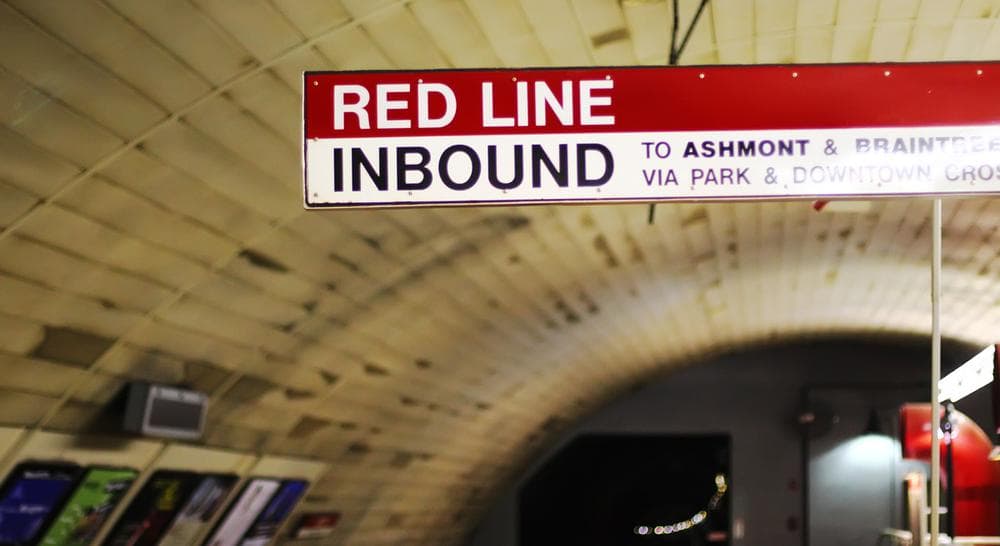Advertisement
An Investment In Public Transportation Is An Investment In The Future
According to legislative leaders, the short and controversial life of the “tech tax” — the state’s proposed levy on software services — will soon come to an end. After a full-throttle revolt from the innovation sector, all parties — including the governor — agree the existence of such a tax would weaken the power of Massachusetts as a magnet for entrepreneurs and innovators.
But this is also a time to consider a couple of important points: For one, the tech tax was passed as one part of a larger revenue package. And the objective of this revenue was to improve our transportation capacity and, one of the chief beneficiaries of transportation investments is the tech sector itself.
Public transit helps create vibrant, high density neighborhoods, teeming with creativity and innovation...
Ask any innovation expert where new ideas and new companies thrive these days and they’ll tell you Kendall Square in Cambridge, the Leather District and the Waterfront area in Boston, and increasingly in cities like mine, Somerville.
And what do they all have in common? Close proximity to public transportation — specifically, the Red Line.
Route 128 may be America’s "high tech corridor" but the Red Line is arguably its main artery. That’s because public transit helps create vibrant, high density neighborhoods, teeming with creativity and innovation; the kinds of areas start-ups are drawn to. Economic growth experts say these urban hubs create a “bump factor” — places where people can easily bump into each other; where ideas can percolate and capital can flow freely; where ideas thrive and talent is plentiful.
Companies located in these transit hubs are producing some of the world’s most cutting edge innovations in data analytics and mobile communications, robotics and clean energy, biotechnology and life sciences.

Since the Red Line’s arrival in the 1980s, Somerville’s Davis Square has continued to grow in popularity — both as a social and residential destination, but also as thriving business community. Today, Davis is home to a number of technology companies, from the online marketing firm Echo Ditto to the digital production outfit Powderhouse Productions.
Meanwhile, on the other side of Somerville, another urban hub is springing up at Assembly Square. For a generation, this area was an industrial wasteland, home to an underused mall, a junkyard, and abandoned factories leeching pollution into the Mystic River.
We can remake every corner of the state if we make the right investments.
Today, it’s home to a rebuilt retail center and new restaurants. The first of several office and apartment buildings are going up. Affordable housing is being expanded. And we’re reclaiming the river’s waterfront, building new parks and recreation areas. A movie theater and more retail spaces are also in the works.
We’re building yet another potential innovation center at Assembly Square — another neighborhood with a bump factor. And developers past and present will testify that none of it would have been possible without the lynchpin: a new Orange Line stop. Assembly, which is planned to open in fall 2014, will become the first new station on the MBTA since 1987.
This new stop will cost the state $39 million. But the payoff is huge: In our first phase, we’re unleashing $1.4 billion in private investment while creating more than 10,000 construction jobs and another 10,000 permanent jobs.
Once fully built, the Assembly Square project will raise $24 million in new annual city revenues, which in turn will help us improve schools, build even more affordable housing, and bolster city services. And what will the state receive for its initial investment? $16 million in annual tax revenue. Even with interest, it will pay for itself in just the first several years.
The challenge for the state is to make these kinds of transportation investments in other key regions, so we can jump-start other local economies.
Already we see signs. Quincy is hard at work on a $1.6 billion revitalization of its downtown — a direct result of the presence of the Red Line. New Bedford is betting the commuter rail’s arrival will help it recast itself as a wind-energy center. Springfield is investing in a rebuilt Union Station and now awaits funding for its rail extension from Boston. And the planned Green Line extension will bolster Medford and another part of my city, East Somerville, long under-utilized and, in some places, blighted.
We can remake every corner of the state if we make the right investments.
The threat of the tech tax forced innovation companies to engage in a rigorous public policy debate, many for the first time. Having won this fight, they’ll be tempted to walk away, content with their winnings. But now is the time for them to double down on the future, to stay at the table and help us build a transportation system worthy of a 21st century economy.
We all have a stake in growing the Commonwealth’s economy. It’s time to work together to make it happen.
Related:
- 9/12/13: DeLeo, Murray Agree On Repealing ‘Tech Tax’
- 9/10/13: In Major Shift, Patrick Backs Tech Tax Repeal
- 4/2/13: To Fund Transportation, Leaders’ Plan Would Raise Gas, Cigarette Taxes
- 3/5/13: MBTA: Higher Fares, Service Cuts Likely Without More Funding
- 1/14/13: Patrick Proposes Expanding Rail Service; Revenue Options Listed
This program aired on September 24, 2013. The audio for this program is not available.